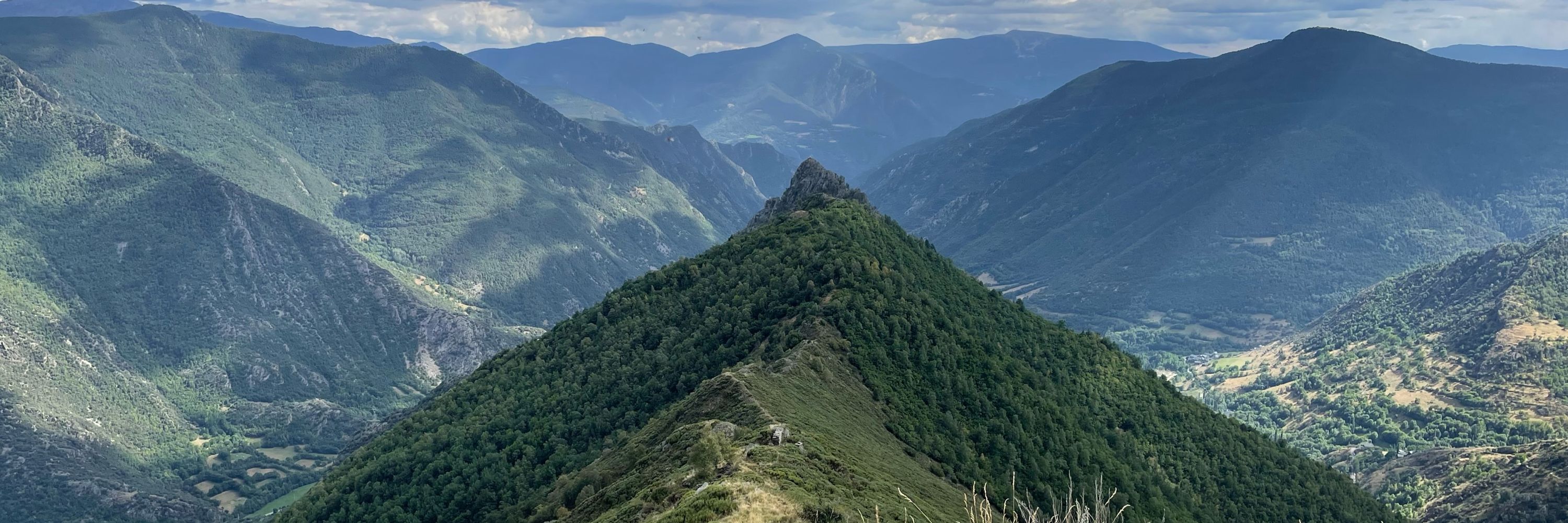
@estergaya.bsky.social
Reposted
Another spooky species is Cordyceps farinosa, parasitising a moth pupa. The white mycelium of this specimen covers the grub, giving it a mummy-like appearance, while the above ground fruiting structure puffs out spores, spreading it to other potential hosts.
Happy Halloween from Kew Mycology 🧟🍄
Happy Halloween from Kew Mycology 🧟🍄


October 31, 2025 at 2:24 PM
Another spooky species is Cordyceps farinosa, parasitising a moth pupa. The white mycelium of this specimen covers the grub, giving it a mummy-like appearance, while the above ground fruiting structure puffs out spores, spreading it to other potential hosts.
Happy Halloween from Kew Mycology 🧟🍄
Happy Halloween from Kew Mycology 🧟🍄
Reposted
Happy Halloween! We’re showing off two spooky fungi from Kew. First up, found by a Fungarium Sequencing Project team member, this Cordyceps militaris is parasitising a moth larva!
The beautiful jack-o-lantern orange fruiting body is visible above ground, while the larva is buried beneath the dirt 🪦
The beautiful jack-o-lantern orange fruiting body is visible above ground, while the larva is buried beneath the dirt 🪦


October 31, 2025 at 2:24 PM
Happy Halloween! We’re showing off two spooky fungi from Kew. First up, found by a Fungarium Sequencing Project team member, this Cordyceps militaris is parasitising a moth larva!
The beautiful jack-o-lantern orange fruiting body is visible above ground, while the larva is buried beneath the dirt 🪦
The beautiful jack-o-lantern orange fruiting body is visible above ground, while the larva is buried beneath the dirt 🪦
Reposted
Very excited to share that my first 1st author publication is available at the journal of #NewPhytologist !
Congratulations to the entire team that worked on this project including the #KewFungarium Team. 👏 🍄🟫
If you are interested in the topic, feel free to read it here: doi.org/10.1111/nph....
Congratulations to the entire team that worked on this project including the #KewFungarium Team. 👏 🍄🟫
If you are interested in the topic, feel free to read it here: doi.org/10.1111/nph....

Whole genome sequencing of historical specimens from the world's largest fungal collection yields high‐quality assemblies
High-throughput molecular studies of museum specimens (museomics) have great potential in biodiversity research, but fungal historical collections have scarcely been examined, leading to no comprehe...
doi.org
September 16, 2025 at 8:09 AM
Very excited to share that my first 1st author publication is available at the journal of #NewPhytologist !
Congratulations to the entire team that worked on this project including the #KewFungarium Team. 👏 🍄🟫
If you are interested in the topic, feel free to read it here: doi.org/10.1111/nph....
Congratulations to the entire team that worked on this project including the #KewFungarium Team. 👏 🍄🟫
If you are interested in the topic, feel free to read it here: doi.org/10.1111/nph....
Reposted
🧪 Are you doing a PhD at a UK university and looking for a 3-month placement that makes a real impact?
✔ Open to PIPS and other externally funded placements
✔ Build new skills, expand your network, support world-class biodiversity work
✔ Apply: ow.ly/65wF50WLXa8
🗓️ Deadline: 31 October 2025 🌾
✔ Open to PIPS and other externally funded placements
✔ Build new skills, expand your network, support world-class biodiversity work
✔ Apply: ow.ly/65wF50WLXa8
🗓️ Deadline: 31 October 2025 🌾

September 23, 2025 at 2:03 PM
🧪 Are you doing a PhD at a UK university and looking for a 3-month placement that makes a real impact?
✔ Open to PIPS and other externally funded placements
✔ Build new skills, expand your network, support world-class biodiversity work
✔ Apply: ow.ly/65wF50WLXa8
🗓️ Deadline: 31 October 2025 🌾
✔ Open to PIPS and other externally funded placements
✔ Build new skills, expand your network, support world-class biodiversity work
✔ Apply: ow.ly/65wF50WLXa8
🗓️ Deadline: 31 October 2025 🌾
Was a pleasure to contribute a small part to this massive WGS effort of Kew's fungarium! @estergaya.bsky.social @rbgkew.bsky.social
Check out the paper @newphyt.bsky.social 👉 doi.org/10.1111/nph.70472
Check out the paper @newphyt.bsky.social 👉 doi.org/10.1111/nph.70472
September 29, 2025 at 3:07 PM
Reposted
Was a pleasure to contribute a small part to this massive WGS effort of Kew's fungarium! @estergaya.bsky.social @rbgkew.bsky.social
Check out the paper @newphyt.bsky.social 👉 doi.org/10.1111/nph.70472
Check out the paper @newphyt.bsky.social 👉 doi.org/10.1111/nph.70472

September 16, 2025 at 12:37 PM
Was a pleasure to contribute a small part to this massive WGS effort of Kew's fungarium! @estergaya.bsky.social @rbgkew.bsky.social
Check out the paper @newphyt.bsky.social 👉 doi.org/10.1111/nph.70472
Check out the paper @newphyt.bsky.social 👉 doi.org/10.1111/nph.70472
Reposted
We showcased progress across sampling, taxonomy, lab work, and bioinformatics - and loved connecting with fellow mycologists to exchange ideas, spark collaborations, and celebrate the science of fungi.
Find out what we’re uncovering as part of our Fungarium Sequencing Project 👉 ow.ly/R1p950WywCq
Find out what we’re uncovering as part of our Fungarium Sequencing Project 👉 ow.ly/R1p950WywCq



August 1, 2025 at 11:30 AM
We showcased progress across sampling, taxonomy, lab work, and bioinformatics - and loved connecting with fellow mycologists to exchange ideas, spark collaborations, and celebrate the science of fungi.
Find out what we’re uncovering as part of our Fungarium Sequencing Project 👉 ow.ly/R1p950WywCq
Find out what we’re uncovering as part of our Fungarium Sequencing Project 👉 ow.ly/R1p950WywCq
Reposted
From Darwin-collected specimens to fungi with deep cultural and economic value, our posters highlighted the incredible stories locked in Kew’s Fungarium.


August 1, 2025 at 11:30 AM
From Darwin-collected specimens to fungi with deep cultural and economic value, our posters highlighted the incredible stories locked in Kew’s Fungarium.
Reposted
What do you find when you sequence 7,000 fungi? We’re starting to find out… 🍄🔬
At this year’s British Mycological Society conference - a key meeting point for the UK’s fungal research community - we shared some of the first discoveries from our Fungarium Sequencing Project.
At this year’s British Mycological Society conference - a key meeting point for the UK’s fungal research community - we shared some of the first discoveries from our Fungarium Sequencing Project.
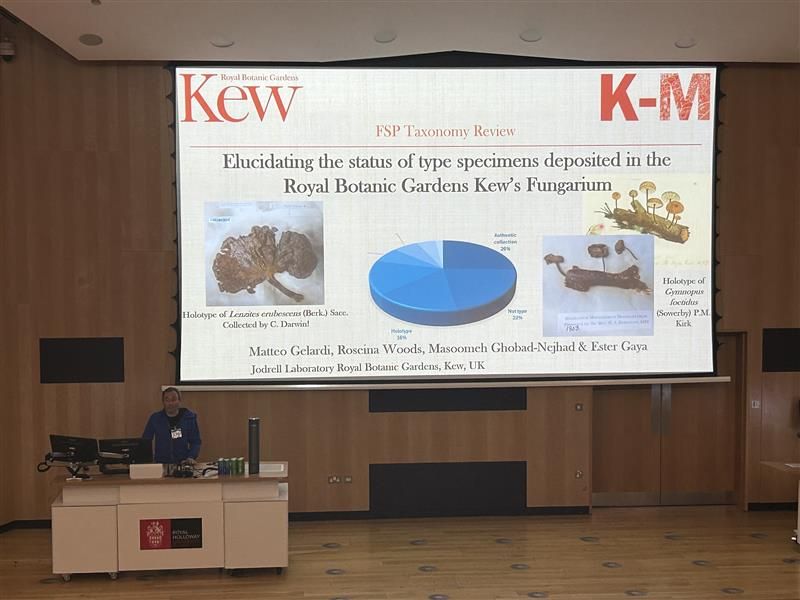
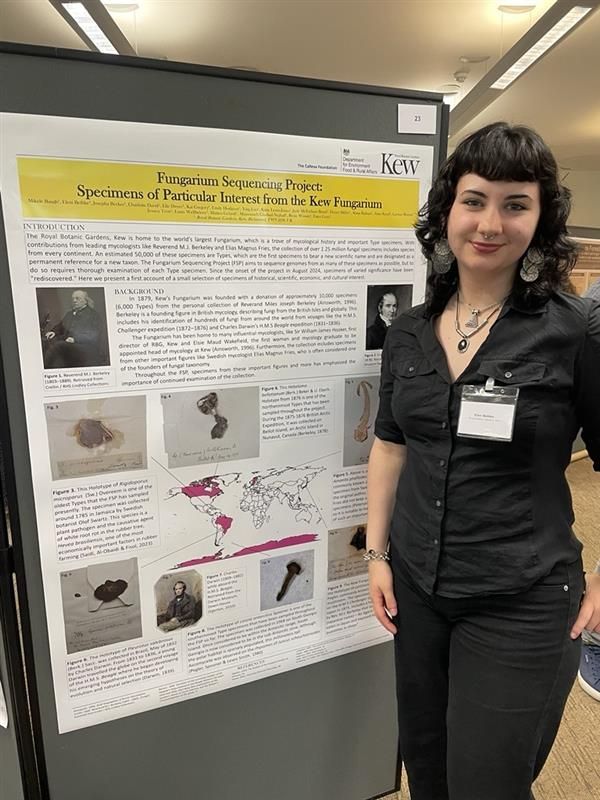
August 1, 2025 at 11:30 AM
What do you find when you sequence 7,000 fungi? We’re starting to find out… 🍄🔬
At this year’s British Mycological Society conference - a key meeting point for the UK’s fungal research community - we shared some of the first discoveries from our Fungarium Sequencing Project.
At this year’s British Mycological Society conference - a key meeting point for the UK’s fungal research community - we shared some of the first discoveries from our Fungarium Sequencing Project.
Reposted
Happy #FungiFriday! 🍄 Recent rain has sparked a late-summer flush at Kew. First up, Chicken of the woods Laetiporus sulphureus on a carved badger, spotted by Kew mycologist Ben Blades. Seen any yourself? Tag us or log it on iNaturalist. 🧪

August 22, 2025 at 3:00 PM
Happy #FungiFriday! 🍄 Recent rain has sparked a late-summer flush at Kew. First up, Chicken of the woods Laetiporus sulphureus on a carved badger, spotted by Kew mycologist Ben Blades. Seen any yourself? Tag us or log it on iNaturalist. 🧪
Reposted
From fungal medicine to climate-proof crops - Kew’s digitised collections are packed with solutions for today’s biggest challenges! 🌍🌾
Dive into the Data Portal and show us how you’re putting Kew data to work! 🧑🔬⬇️
bit.ly/4oc5bMC
Dive into the Data Portal and show us how you’re putting Kew data to work! 🧑🔬⬇️
bit.ly/4oc5bMC

August 26, 2025 at 3:49 PM
From fungal medicine to climate-proof crops - Kew’s digitised collections are packed with solutions for today’s biggest challenges! 🌍🌾
Dive into the Data Portal and show us how you’re putting Kew data to work! 🧑🔬⬇️
bit.ly/4oc5bMC
Dive into the Data Portal and show us how you’re putting Kew data to work! 🧑🔬⬇️
bit.ly/4oc5bMC
Reposted
What’s it really like to head out on a fungal collecting trip? 🍄 Here’s Finn’s story:
As part of Kew’s Mycology team, we joined the British Mycological Society for a week in the Forest of Dean - hunting fungi, puzzling over IDs & collecting specimens for our fungarium. Come with me into the field…
As part of Kew’s Mycology team, we joined the British Mycological Society for a week in the Forest of Dean - hunting fungi, puzzling over IDs & collecting specimens for our fungarium. Come with me into the field…

September 5, 2025 at 1:08 PM
What’s it really like to head out on a fungal collecting trip? 🍄 Here’s Finn’s story:
As part of Kew’s Mycology team, we joined the British Mycological Society for a week in the Forest of Dean - hunting fungi, puzzling over IDs & collecting specimens for our fungarium. Come with me into the field…
As part of Kew’s Mycology team, we joined the British Mycological Society for a week in the Forest of Dean - hunting fungi, puzzling over IDs & collecting specimens for our fungarium. Come with me into the field…
Reposted
Our Fungal Conservation column is out in Field Mycology 26 (2).
www.fieldmycology.org/index.php/jo...
🍄 Fungi and the Planning and Infrastructure Bill
🍄 British fungi on the Global Red List
🍄 An audit of nationally important fungal assemblages in Welsh SSSIs
#fungi #fungalconservation #PIB
www.fieldmycology.org/index.php/jo...
🍄 Fungi and the Planning and Infrastructure Bill
🍄 British fungi on the Global Red List
🍄 An audit of nationally important fungal assemblages in Welsh SSSIs
#fungi #fungalconservation #PIB
Fungal Futures: Conservation news and views
| Field Mycology
www.fieldmycology.org
August 17, 2025 at 8:38 PM
Our Fungal Conservation column is out in Field Mycology 26 (2).
www.fieldmycology.org/index.php/jo...
🍄 Fungi and the Planning and Infrastructure Bill
🍄 British fungi on the Global Red List
🍄 An audit of nationally important fungal assemblages in Welsh SSSIs
#fungi #fungalconservation #PIB
www.fieldmycology.org/index.php/jo...
🍄 Fungi and the Planning and Infrastructure Bill
🍄 British fungi on the Global Red List
🍄 An audit of nationally important fungal assemblages in Welsh SSSIs
#fungi #fungalconservation #PIB
Reposted
An opportunity of a lifetime for budding lichenologists. The National Trust and the Royal Botanics, Edinburgh are offering a PAID lichen traineeship in #Scotland! The work programme looks fascinating and a great opportunity to develop skills. Deadline: 3/10/2025. www.asva.co.uk/jobs/trainee...




September 5, 2025 at 1:32 PM
An opportunity of a lifetime for budding lichenologists. The National Trust and the Royal Botanics, Edinburgh are offering a PAID lichen traineeship in #Scotland! The work programme looks fascinating and a great opportunity to develop skills. Deadline: 3/10/2025. www.asva.co.uk/jobs/trainee...
Reposted
I’m super happy to present the first discoveries of the RIKEN-Cambridge Joint Crop Symbiosis Research Team, based in Japan 🇯🇵
doi.org/10.1101/2025...
A thread 👇
doi.org/10.1101/2025...
A thread 👇

Reductive evolution of the DNA replication machinery in endosymbiotic fungi
The molecular machinery for replicating and repairing DNA accurately is critically important for life and highly conserved across the Tree of Life. Here we show that two major lineages of fungi, Glome...
doi.org
September 3, 2025 at 3:21 PM
I’m super happy to present the first discoveries of the RIKEN-Cambridge Joint Crop Symbiosis Research Team, based in Japan 🇯🇵
doi.org/10.1101/2025...
A thread 👇
doi.org/10.1101/2025...
A thread 👇
🚨 Job Alert at RBG Kew! We are looking for Lab Research Assistants in genomics to join our Fungarium Sequencing Project! Do you like Fungi? Do you want to develop new -omics techniques? Interested in historical collections? Join the team! Posts to start ASAP. Apply here:https://lnkd.in/e2BpWJpA

June 25, 2025 at 10:58 AM
🚨 Job Alert at RBG Kew! We are looking for Lab Research Assistants in genomics to join our Fungarium Sequencing Project! Do you like Fungi? Do you want to develop new -omics techniques? Interested in historical collections? Join the team! Posts to start ASAP. Apply here:https://lnkd.in/e2BpWJpA
In case you want to know more about Kew’s Fungarium and our sequencing work! #Fungi #museomics @rbgkew.bsky.social
www.newscientist.com/video/248375...
www.newscientist.com/video/248375...

Unlocking genetic secrets of the world's most vital fungi collection
Fungi underpin all life on Earth, yet it is estimated that more than 95 per cent of fungal species remain undiscovered. Holding over 1.25 million dried specimens, the Fungarium at Royal Botanic Garden...
www.newscientist.com
June 11, 2025 at 4:16 PM
In case you want to know more about Kew’s Fungarium and our sequencing work! #Fungi #museomics @rbgkew.bsky.social
www.newscientist.com/video/248375...
www.newscientist.com/video/248375...
Reposted
Opportunity for frontend developer at European Bioinformatics Institute (Hinxton UK) ref: JR970 | duration: 3 years | closing: 01-Jun-2025 #CompSci #DataScience #cheminformatics #bioinformatics #ChemBiol #ChEMBL #SureChEMBL #UniChem #chemsky 🧪
embl.wd103.myworkdayjobs.com/en-US/EMBL/d...
embl.wd103.myworkdayjobs.com/en-US/EMBL/d...

Frontend Developer
We are looking for a talented frontend developer to join the Chemical Biology team at the European Bioinformatics Institute (EMBL-EBI) located on the Wellcome Genome Campus near Cambridge in the UK. T...
embl.wd103.myworkdayjobs.com
May 6, 2025 at 6:23 AM
Opportunity for frontend developer at European Bioinformatics Institute (Hinxton UK) ref: JR970 | duration: 3 years | closing: 01-Jun-2025 #CompSci #DataScience #cheminformatics #bioinformatics #ChemBiol #ChEMBL #SureChEMBL #UniChem #chemsky 🧪
embl.wd103.myworkdayjobs.com/en-US/EMBL/d...
embl.wd103.myworkdayjobs.com/en-US/EMBL/d...
Reposted
This one hurts. I wouldn’t have a PhD, or have had some of the best experiences in my life, or made some of my best friends #WithoutNSF & without the PGC. I was employee #1 of an organization that grew into an indispensable part of Polar Programs. And it’s being dismantled for literally no reason
🧪🌎
🧪🌎
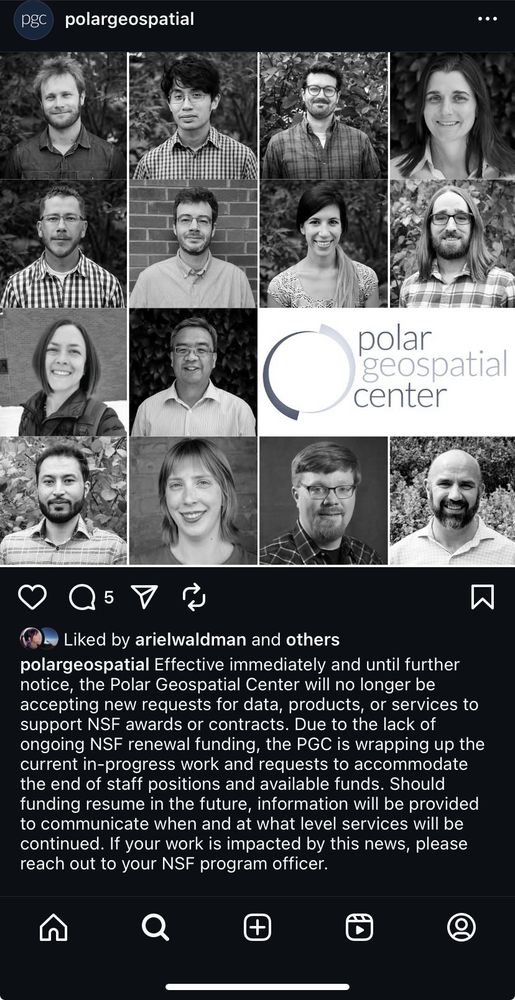
May 6, 2025 at 6:25 AM
This one hurts. I wouldn’t have a PhD, or have had some of the best experiences in my life, or made some of my best friends #WithoutNSF & without the PGC. I was employee #1 of an organization that grew into an indispensable part of Polar Programs. And it’s being dismantled for literally no reason
🧪🌎
🧪🌎
Reposted
Symbiotic synergy: How Arbuscular Mycorrhizal Fungi enhance nutrient uptake, stress tolerance, and soil health through molecular mechanisms and hormonal regulation

Symbiotic synergy: How Arbuscular Mycorrhizal Fungi enhance nutrient uptake, stress tolerance, and soil health through molecular mechanisms and hormonal regulation
Arbuscular Mycorrhizal (AM) symbiosis is integral to sustainable agriculture and enhances plant resilience to abiotic and biotic stressors. Through their symbiotic association with plant roots, AM improves nutrient and water uptake, activates antioxidant defenses, and facilitates hormonal regulation, contributing to improved plant health and productivity. Plants release strigolactones, which trigger AM spore germination and hyphal branching, a process regulated by genes, such as D27, CCD7, CCD8, and MAX1. AM recognition by plants is mediated by receptor-like kinases (RLKs) and LysM domains, leading to the formation of arbuscules that optimize nutrient exchange. Hormonal regulation plays a pivotal role in this symbiosis; cytokinins enhance AM colonization, auxins support arbuscule formation, and brassinosteroids regulate root growth. Other hormones, such as salicylic acid, gibberellins, ethylene, jasmonic acid, and abscisic acid, also influence AM colonization and stress responses, further bolstering plant resilience. In addition to plant health, AM enhances soil health by improving microbial diversity, soil structure, nutrient cycling, and carbon sequestration. This symbiosis supports soil pH regulation and pathogen suppression, offering a sustainable alternative to chemical fertilizers and improving soil fertility. To maximize AM ’s potential of AM in agriculture, future research should focus on refining inoculation strategies, enhancing compatibility with different crops, and assessing the long-term ecological and economic benefits. Optimizing AM applications is critical for improving agricultural resilience, food security, and sustainable farming practices.
imafungus.pensoft.net
April 16, 2025 at 8:43 PM
Symbiotic synergy: How Arbuscular Mycorrhizal Fungi enhance nutrient uptake, stress tolerance, and soil health through molecular mechanisms and hormonal regulation
Reposted
Thirty-eight of 43 experts cut last month from the boards that review the science and research that happens in laboratories at the National Institutes of Health are female, Black or Hispanic, according to an analysis by the chairs of a dozen of the boards.
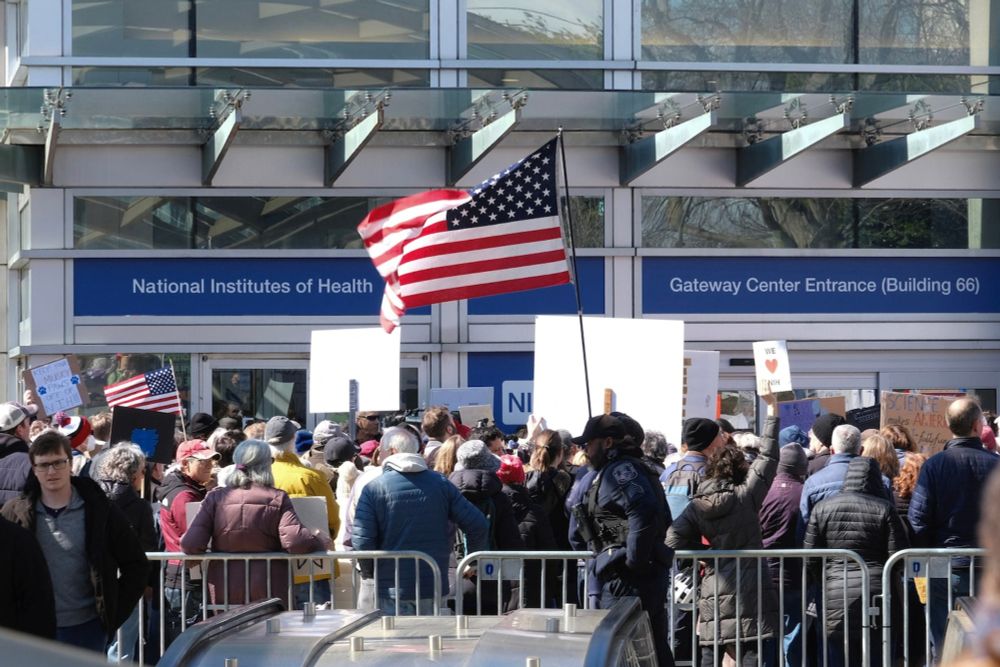
Women, minorities fired in purge of NIH science review boards
Scientists, with expertise in fields that include mental health, cancer and infectious disease, typically serve five-year terms and were not given a reason for their dismissal.
www.washingtonpost.com
April 16, 2025 at 6:46 PM
Thirty-eight of 43 experts cut last month from the boards that review the science and research that happens in laboratories at the National Institutes of Health are female, Black or Hispanic, according to an analysis by the chairs of a dozen of the boards.
Reposted
Mycorrhizal fungi promote native & suppress invasive plants & help prevent soil erosion
Why don't (fed or state) governments monitor fungi?
Soil biology, generally, is not included in biodiversity assessments. Yet soil contains 59% of biodiversity?
Madness.
theconversation.com/from-trading...
Why don't (fed or state) governments monitor fungi?
Soil biology, generally, is not included in biodiversity assessments. Yet soil contains 59% of biodiversity?
Madness.
theconversation.com/from-trading...
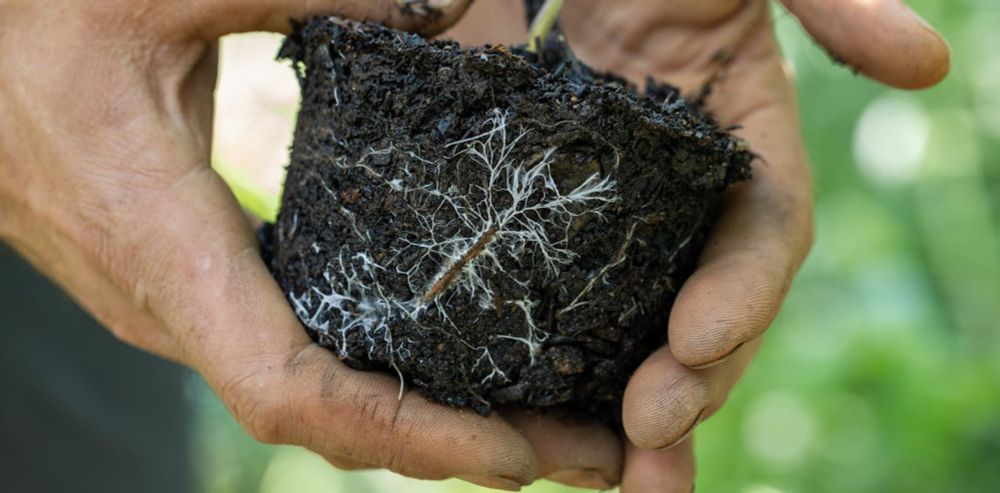
From trading nutrients to storing carbon: 5 things you didn’t know about our underground fungi
Most of Australia’s plants rely on a hidden underground network of fungi for water and minerals. They could be in trouble – but we don’t have the data to know.
theconversation.com
April 2, 2025 at 8:32 PM
Mycorrhizal fungi promote native & suppress invasive plants & help prevent soil erosion
Why don't (fed or state) governments monitor fungi?
Soil biology, generally, is not included in biodiversity assessments. Yet soil contains 59% of biodiversity?
Madness.
theconversation.com/from-trading...
Why don't (fed or state) governments monitor fungi?
Soil biology, generally, is not included in biodiversity assessments. Yet soil contains 59% of biodiversity?
Madness.
theconversation.com/from-trading...
Reposted
Today at the “Stand up for Science” demonstration at the Lincoln Memorial.

March 7, 2025 at 6:54 PM
Today at the “Stand up for Science” demonstration at the Lincoln Memorial.
Reposted
#CMINorwich25 @micronorwich Keynote talk is Charissa de Bekker on mechanism of Ophiocordyceps manipulation of ants 🐜 #ZombieAnts

February 26, 2025 at 9:33 AM
#CMINorwich25 @micronorwich Keynote talk is Charissa de Bekker on mechanism of Ophiocordyceps manipulation of ants 🐜 #ZombieAnts
Reposted
Our newest research on plant-fungal trade published today in @nature.com.
The work, led by scientists from Vrije Universiteit, Princeton University, SPUN & AMOLF combines robotics, mycology & biophysics to reveal underground supply-chain dynamics.
Open access:
www.nature.com/articles/s41...
The work, led by scientists from Vrije Universiteit, Princeton University, SPUN & AMOLF combines robotics, mycology & biophysics to reveal underground supply-chain dynamics.
Open access:
www.nature.com/articles/s41...
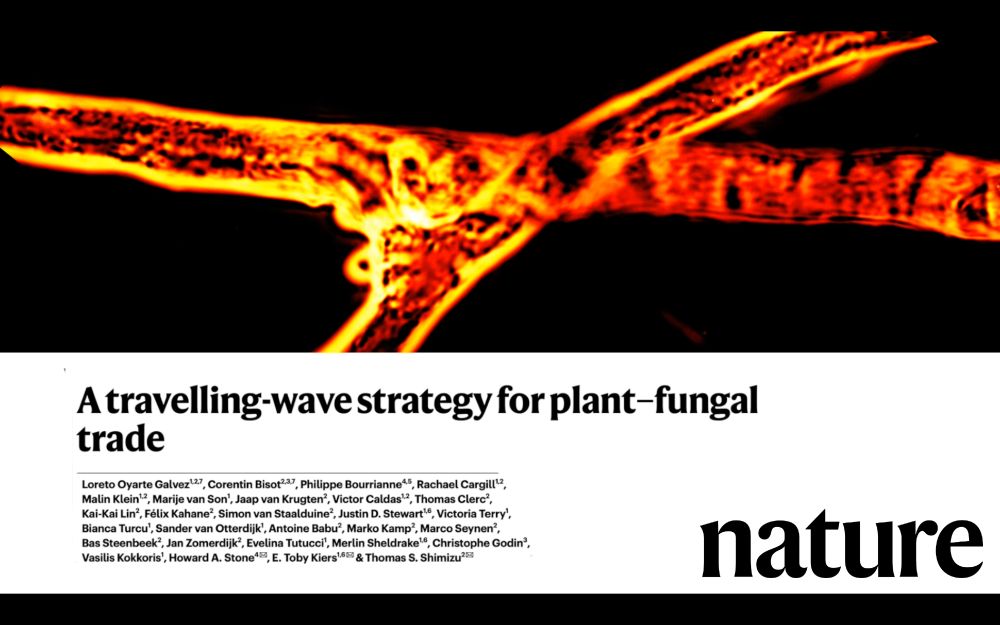
February 26, 2025 at 4:33 PM
Our newest research on plant-fungal trade published today in @nature.com.
The work, led by scientists from Vrije Universiteit, Princeton University, SPUN & AMOLF combines robotics, mycology & biophysics to reveal underground supply-chain dynamics.
Open access:
www.nature.com/articles/s41...
The work, led by scientists from Vrije Universiteit, Princeton University, SPUN & AMOLF combines robotics, mycology & biophysics to reveal underground supply-chain dynamics.
Open access:
www.nature.com/articles/s41...

